The Odds of Dying
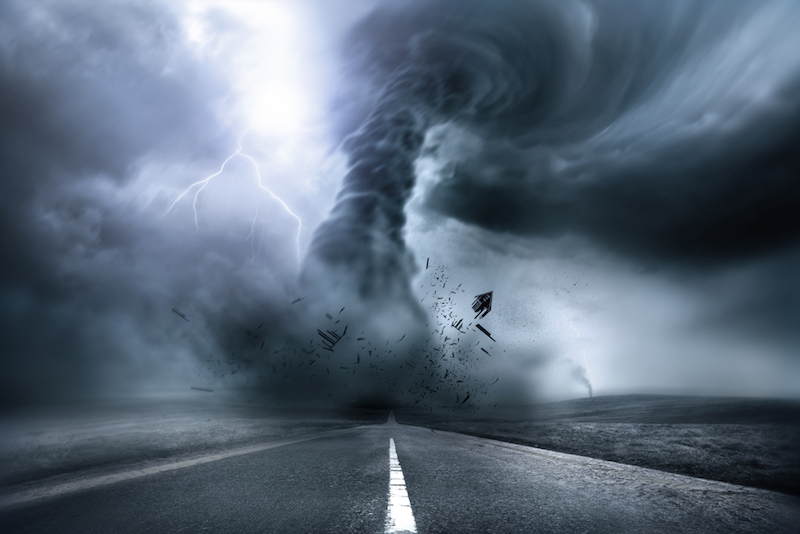
Everyone dies of something, but after slogging through the daily news, you'd think most people die from terrorism, shark attacks and gas explosions. But are these tragedies — not to mention deaths from lightning strikes, plane crashes and tsunamis — actually top killers in the United States?
Not really.
Even combined, these incidents killed far fewer people than the most deadly illness — heart disease, which took the lives of more than 614,000 people in the United States in 2014, accounting for about 23 percent of all deaths in the country, according to the Centers for Disease Control and Prevention (CDC).
To separate the deaths that make headlines from those that are far more common, Live Science investigated the odds of dying from various causes. We used the CDC's Wonder database for 2014 data and other sources, and found that you're more likely to die of Alzheimer's disease (about 29 deaths per 100,000 people in the U.S.) than you are from contact with a venomous snake or lizard (there were just five such deaths in 2014).
In total, about 2.6 million people died in the United States in 2014, according to the CDC. To put this number into perspective, that means about 824 people died for every 100,000 people in the country. (Keep this statistic in mind, as we'll be giving death rates per 100,000 people throughout this article.) Worldwide, an estimated 56 million people died in 2012, the most recent year for which numbers on worldwide deaths are available from the World Health Organization (WHO).
Although Hollywood advised us (in no fewer than five of its blockbusters) to "Die Hard," there are a ton of ways to die. Here's a look at how many people die from common, unexpected and even theoretical events, and the science behind those numbers. [9 Healthy Habits You Can Do in 1 Minute (Or Less)]
Ways to Die
Sign up for the Live Science daily newsletter now
Get the world’s most fascinating discoveries delivered straight to your inbox.
- Top 2 Deadly Diseases
- Top Killers
- Respiratory Diseases & Accidents
- More Diseases
- Drug Overdoses
- Animal Attacks
- Transportation
- Terrorism & Homicides
- Other Scary Ways to Die
- Natural Disasters
Top 2 Deadly Diseases
In decades past, infectious diseases were the No. 1 killer, "but with the advent of antibiotics and treatment of infectious diseases, people started to live longer," said Dr. Maan Fares, a staff cardiologist at Cleveland Clinic. With many infections now conquered, people's lifestyle choices — including whether they smoke, how they eat and how much they exercise — are catching up with them, and causing conditions such as diabetes, high blood pressure and high cholesterol, Fares told Live Science.
So, it may come as no surprise that the top two killers — heart disease and cancer — account for roughly half of all deaths in the United States. About 193 per 100,000 people died from cardiovascular problems, such as heart attacks, in the United States in 2014. Worldwide, cardiovascular diseases killed 17.5 million people, accounting for 3 of every 10 deaths in 2012, the WHO reported.
People's risk of heart disease rises with smoking, sedentary lifestyles and poor sleep. To lower your risk of dying of heart disease, you can exercise, eat colorful fruits and vegetables (and fiber), and drink less alcohol.
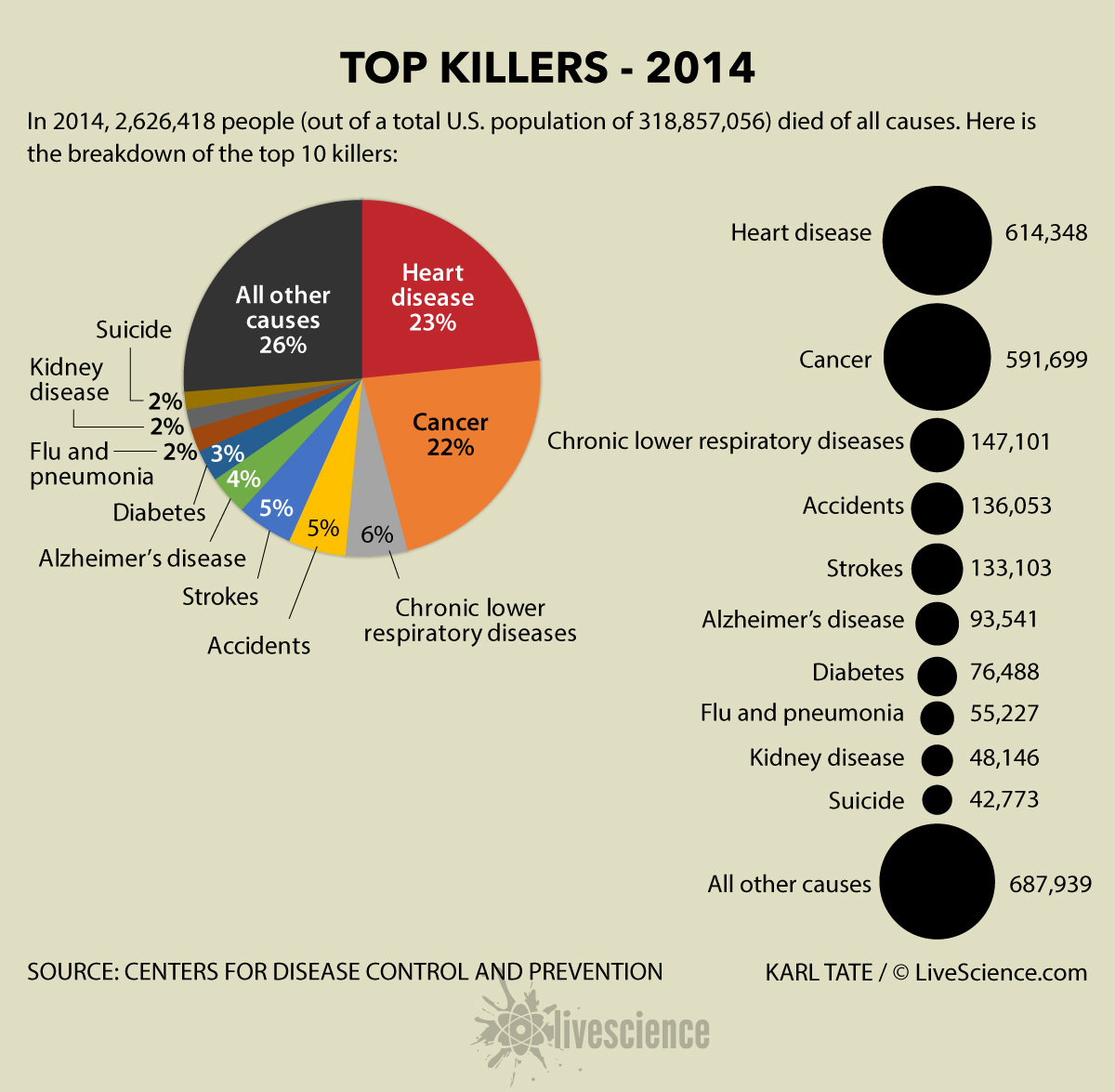
Cancer placed second, with about 186 deaths per 100,000 people in the United States. Some cancers took more lives than others. The top killers, lung and bronchial cancers, killed about 155,000 people in 2014, or about 49 deaths per 100,000 people. Colon and rectal cancers claimed about 16 lives per 100,000 people, and breast cancer took about 13 lives per 100,000 people. Pancreatic cancer and prostate cancer followed, with about 12.7 and 9 deaths per 100,000 people, respectively. [7 Cancers You Can Ward Off with Exercise]
"We still don't know what causes cancer, but we do realize that each cancer is different, and the risk factors associated with each is very different," said Dr. Rupal O'Quinn, a cardio-oncologist at the University of Pennsylvania. People with cancer are living longer and sometimes even beating their diagnosis, largely thanks to cancer screenings, organ transplants and targeted therapies (newer drugs that aim to specifically kill cancer cells, rather than the broader approach of chemotherapy drugs), O'Quinn said.
There were 3 million cancer survivors in the country in 1971, and more than 12 million in 2012, according to a study in the International Journal of Medical Sciences. But there is still much to be learned about cancer, she said. Screening cannot look for every type of cancer, such as ovarian cancer, which may explain why some cancers claim more lives than others, O'Quinn said.
A person's cancer risk may also vary according to region. For instance, esophageal cancer kills about 4 per 100,000 people a year in the United States, but about 140 per 100,000 people in Central Asian countries such as Pakistan, according to a 2004 study in the journal Annals of Oncology.
The reason? Researchers suspect that the higher rates of esophageal cancer in Central Asia are linked to the use of chewing tobacco — a habit common in Pakistan — as well as the "drinking of very hot beverages such as tea and Kawa [or kahwa], which are again, extremely common in Pakistan," the researchers wrote in the study. (Drinking scalding-hot beverages is linked to an increased risk of esophageal cancer, a 2009 study in northern Iran found.)
People's risk of cancer generally rises the longer they live, but also with smoking, using tanning beds and sitting too much. To lower your risk of dying of cancer, you can get recommended screenings, exercise and eat a healthy diet.
Top Killers
The first eight diseases listed in the table below were the top eight killers in the United States in 2014, whereas the rest are shown for comparison purposes.
.tg {border-collapse:collapse;border-spacing:0;} .tg td{font-family:Arial, sans-serif;font-size:14px;padding:10px 5px;border-style:solid;border-width:1px;overflow:hidden;word-break:normal;} .tg th{font-family:Arial, sans-serif;font-size:14px;font-weight:normal;padding:10px 5px;border-style:solid;border-width:1px;overflow:hidden;word-break:normal;} .tg .tg-baqh{text-align:center;vertical-align:top} .tg .tg-hgcj{font-weight:bold;text-align:center} .tg .tg-amwm{font-weight:bold;text-align:center;vertical-align:top} .tg .tg-yw4l{vertical-align:top}
| Cause of death | Number of U.S. deaths | Rate of deaths |
|---|---|---|
| 1. Cardiovascular disease | 614,348 | 193 per 100,000 |
| 2. Cancer | 591,699 | 186 per 100,000 |
| 3. Chronic lower respiratory disease | 147,101 | 46 per 100,000 |
| 4. Accidents | 136,053 | 43 per 100,000 |
| 5. Strokes | 133,103 | 42 per 100,000 |
| 6. Alzheimer's disease | 93,541 | 29 per 100,000 |
| 7. Diabetes | 76,488 | 24 per 100,000 |
| 8. Influenza and pneumonia | 55,227 | 17 per 100,000 |
| Drug overdoses | 47,055 | 15 per 100,000 |
| Kidney disease | 48,146 | 15 per 100,000 |
| Intentional self-harm | 42,773 | 13 per 100,000 |
| Septicemia | 38,940 | 12 per 100,000 |
| Liver disease | 38,170 | 12 per 100,000 |
| Transportation accidents | 37,195 | 12 per 100,000 |
| Parkinson's disease | 26,150 | 8 per 100,000 |
| Firearm assault | 10,945 | 3 per 100,000 |
| HIV | 6,721 | 2 per 100,000 |
| Pedestrian deaths | 6,258 | 2 per 100,000 |
Respiratory Diseases & Accidents
In the U.S., after cancer, the next two largest killers are respiratory diseases and accidents. Respiratory diseases such as bronchitis, emphysema and asthma killed about 46 per 100,000 people in 2014, the CDC found. People may lower their respiratory risk by kicking their cigarettes to the curb. Moreover, some evidence suggests that asthma may be prevented in young children if they live with a dog or are exposed to allergens early in life.
Avoiding accidents is a whole other ball game. Accidents include a whole range of unintentional injuries and accounted for about 43 deaths per 100,000 people, or about 5 percent of all deaths in the United States in 2014, the CDC reported. A word to the wise: Remember to take off your headphones if you're walking around town (it can distract you from cars), and don't speed while driving.
The fifth top killer in 2014 was cerebrovascular disease (strokes), which claimed about 42 lives per 100,000 people in the United States.
More Diseases
Other health conditions also took a toll. Influenza and pneumonia (the two conditions are lumped together in CDC statistics) killed about 17 per 100,000 people in the United States, or about 55,000 people in total. Of those, about 23,700 were people age 85 or older, and 186 were infants younger than 1 year old. But many cases of flu can be prevented through vaccination. The 2014 flu shot decreased people's chances of getting the flu by only 19 percent, but the vaccines developed between 2012 and 2013 decreased their chances by 56 percent, Live Science found.
Suicide took the lives of about 42,700 individuals in 2014, meaning that there were about 13 suicides per 100,000 people in the United States that year. It was the 10th leading cause of death in the United States, topping death by assault, which took about 13,000 lives that same year. The number for the suicide hotline is (800) 273-8255.
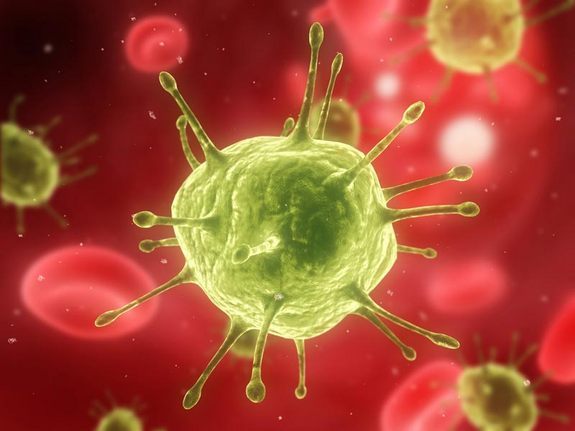
On other fronts, modern medicine is helping people manage their maladies. Human immunodeficiency virus (HIV) disease killed about 6,700 people in the United States in 2014, or about 2 per 100,000 people. That's substantially fewer deaths than the virus caused in 1999 (the first year listed in CDC Wonder), when HIV took the lives of about 14,800 people, or about 5 per 100,000 people. [Extending Life: 7 Ways to Live Past 100]
Worldwide, about 1.2 million people, including 150,000 children younger than age 15, died of HIV-related causes in 2014, WHO reported. That's about a 57 percent decrease from 1999, when about 2.8 million people worldwide died of the disease, according to the Joint United Nations Programme on HIV/AIDS. The drop is largely due to increased access to a drug regimen called antiretroviral therapy (ART), which keeps the virus at low levels within the body, and fewer people contracting the disease, the WHO said.
Other diseases that plague the world are very uncommon in the United States. For instance, malaria killed eight people in the U.S. in 2014 but caused 584,000 deaths worldwide, 90 percent of them in Africa, according to the WHO. Moreover, tuberculosis killed 493 people in the United States, or 0.2 per 100,000 people in 2014. Worldwide, the respiratory disease killed 1.5 million people, the WHO found.
Drug Overdoses
A total of 47,055 people died of drug overdoses in the United States in 2014, or 14.7 deaths per 100,000 people. The number is alarming, as it represents an increase of 6.5 percent over the previous year, the CDC said.
"More persons died from drug overdoses in the United States in 2014 than during any previous year on record," the CDC wrote in a Jan. 1 report. "In 2014, there were approximately one and a half times more drug overdose deaths in the United States than deaths from motor vehicle crashes." Deaths from opioids (including opioid pain relievers and heroin) came in at 9 deaths per 100,000 people in 2014 — a 14 percent increase from 2013. In fact, 61 percent of drug overdose deaths included some type of opioid, the CDC said.
Animal Attacks
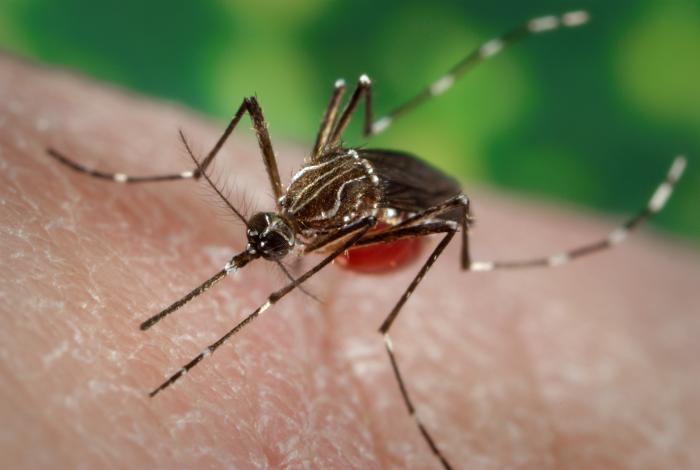
Many people automatically think of sharks when they imagine deadly animals, but they're far from a leading cause of death. CDC Wonder doesn't always mention the exact animal, but it noted that nobody in the U.S. died from "contact with a marine animal" such as a whale or a shark in 2014 (although three people died in this category in 2013).
However, in 2014, six people died after being bitten or stung by a nonvenomous insect, 36 people died after being bitten or mauled by a dog and 83 died after being struck by a mammal (not including dogs), such as a cow or a horse. But rest assured — no one in the U.S. reportedly died from rat bites or crocodile or alligator attacks in 2014. Furthermore, there were no deaths from "contact with plant thorns and spines and sharp leaves," though it's good to know that's a category the CDC can use just in case. [In Photos: The 10 Deadliest Animals]
Worldwide, the deadliest animal (after the mosquito, which kills people with the illness-causing pathogens it carries) is perhaps the snake. Snakebites kill 20,000 people globally each year, according to a 2008 study published in the journal PLOS Medicine.
Transportation
In the United States, people are much more likely to die while walking on a roadway than from tuberculosis or getting mauled by an animal, the odds show. In the United States, there were about 37,000 deaths from "transport accidents" (including car, train, motorcycle and boat accidents). This number includes 6,200 pedestrians who died in transportation collisions — such as crashes with cars, trucks, bikes and trains — meaning that 2 pedestrians died per 100,000 people.
In fact, more pedestrians died in the United States than motorcyclists (about 4,100 deaths) and bicyclists (about 900 deaths) combined, according to CDC Wonder. But death rates from vehicle accidents are still the highest: More than 7,800 people died in a car, pickup truck, van, heavy transport vehicle (such as a semitruck) or bus accident in 2014. That's 2.5 per 100,000 people, according to CDC Wonder.
Of the deaths due to traffic accidents in the U.S., 31 percent were due to alcohol, according to the National Highway Traffic Safety Administration (NHTSA). Of the motor-vehicle-related deaths, speeding accounted for 28 percent, distracted driving for 10 percent and drowsy drivers for almost 3 percent, the NHTSA said.
Terrorism & Homicides
In 2014, there were more than 32,700 deaths related to terrorism worldwide, according to the U.S. Department of State. (The department has yet to post data from 2015, and undoubtedly, these numbers have increased due to the conflicts in Syria and elsewhere.)
More than 6,200 of the 32,700 people (19 percent) killed were perpetrators. These people died after committing suicide, by accident or from security forces or victims responding to the attacks, the department reported. The terrorist attacks happened in 95 countries, but 78 percent of all terrorism fatalities took place in Iraq, Nigeria, Afghanistan, Pakistan and Syria, the department said.
Large attacks increased from 2013 to 2014. In 2013, there were two attacks that killed more than 100 people, but in 2014, there were 20 attacks of this size. Moreover, the death count increased by 81 percent in 2014 compared to in 2013, largely because of terrorist activities in Iraq, Afghanistan and Nigeria, the department reported.
Of course, it's hard to define terrorism, but the department makes an attempt. Terrorism is a violent act "aimed at attaining a political, economic, religious or social goal" that seeks to "coerce, intimidate or convey some other message to a larger audience," according to the report. Terrorism also breaks international humanitarian law by targeting "noncombatants," or innocent people.
In the United States, about another 10,900 people died from an assault by a handgun, rifle, shotgun, larger firearm or unspecified firearm discharge in 2014, accounting for 3.4 deaths per 100,00 people, the CDC reported. (In this case, "firearm assaults" do not include suicides, unintentional shootings, shootings of undetermined intent, justifiable shootings, war or terrorism.)
Other Scary Ways to Die
For comparison, the table below lists the deaths caused by some of the more sensationalized means, also in 2014. These figures tend to vary significantly from year to year, and in the case of some — like deaths from venomous spiders — can be just a handful, or zero. They tend to be so low that when the rate of deaths per 100,000 people is calculated, the result is insignificantly tiny.
.tg {border-collapse:collapse;border-spacing:0;} .tg td{font-family:Arial, sans-serif;font-size:14px;padding:10px 5px;border-style:solid;border-width:1px;overflow:hidden;word-break:normal;} .tg th{font-family:Arial, sans-serif;font-size:14px;font-weight:normal;padding:10px 5px;border-style:solid;border-width:1px;overflow:hidden;word-break:normal;} .tg .tg-9hbo{font-weight:bold;vertical-align:top} .tg .tg-yw4l{vertical-align:top} .tg .tg-baqh{text-align:center;vertical-align:top}
| Cause of Death | Number of U.S. deaths in 2014 (total deaths = 2.6 million) |
|---|---|
| Dengue fever | 2 |
| Venomous snakes or lizards | 5 |
| Nonvenomous insects | 6 |
| Venomous spiders | 7 |
| Malaria | 8 |
| Nonpowered aircraft (Ex: hot air balloons, hang gliders) | 13 |
| Lightning | 25 |
| Struck or bitten by dog | 36 |
| Salmonella infection | 45 |
| Cataclysmic storm | 61 |
| Mauled by a mammal (not including dogs) | 83 |
| Avalanche, landslide or other Earth movement | 85 |
| Contact with venomous plants or animals (Ex: bees, scorpions) | 91 |
| Explosions (including gas) | 116 |
Natural Disasters
Preparedness can make a world of difference when natural disasters strike. Take tsunamis, for instance. Since 2000 B.C., there have been about 2,400 tsunamis that have killed at least 500,000 people, according to the National Oceanic and Atmospheric Administration (NOAA). But the 2004 Sumatra and 2011 Tohoku (Fukushima) tsunamis were the deadliest waves in recent history. [Fukushima Radiation Leak: 5 Things You Should Know]
About 300,000 people were in danger during each of these disasters. But about 230,000 people died in the Sumatra tsunami, whereas an estimated 16,000 died in Japan, according to Vasily Titov, an oceanographer at the NOAA Center for Tsunami Research in Seattle. The difference came down to tsunami education programs and warning systems in Japan, Titov said. "About the same amount of people were exposed for both events, but 10 percent of them died in Japan and about 90 percent were killed in Sumatra," Titov told Live Science.
Fewer people died in Japan because "everyone is very much in tune with the tsunami hazard," and hundreds of thousands of people evacuated to shelters during and after the catastrophe, he said.
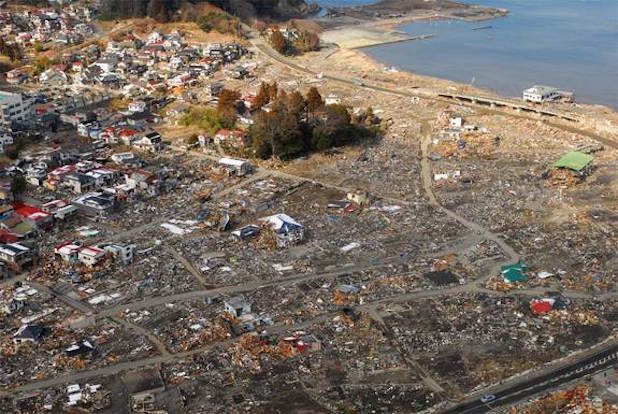
Tsunami readiness may help save lives in the future. Nowadays, people who live on the coastlines of large bodies of water, especially the Pacific and Indian oceans, are at risk, and these populations are only growing. In 2000, about 625.2 million people worldwide lived in low-elevation coastal zones, according to a 2015 study published in the journal PLOS ONE. The researchers estimated that between 879 million and 949 million people will live in these low-elevation areas by 2030, making tsunami education and warning systems paramount.
But preparedness appears to be paying off. In 2010, an 8.8-magnitude earthquake in Chile triggered a tsunami, and together, the earthquake and tsunami killed about 500 people. The tsunami was responsible for fewer than 200 of the deaths, Titov said. In 2015, an 8.3-magnitude earthquake in Chile also triggered a tsunami, but the country immediately evacuated about 1 million people away from the coastline, and only five people died in the catastrophe, Titov said.
To survive a tsunami, create a safety kit and plan, so you and your family know where to meet and how to evacuate to higher ground, Ready.gov advises. Also — needless to say — stay away from the beach.
Unlike for tsunamis, there is no warning system for earthquakes. But few large tremblors have struck populated areas of the United States in recent years. A total of eight people died from earthquakes from 1999 to 2014 in the United States, the CDC reported. Worldwide, earthquakes have killed tens of thousands of people. An estimated 629 people died from earthquakes in 2012; about 22,000 in 2011; and 320,120 in 2010, largely from the 7.0-magnitude earthquake in Haiti, according to the U.S. Geological Survey.
Avalanches and landslides also caused havoc. A total of 549 people died in these natural disasters from 1999 to 2014 in the United States. The deadliest year was 2014, with 85 deaths, including 43 from the catastrophic landslide in Oso, Washington.
Earth could also experience extraterrestrial threats from asteroids. After all, an asteroid is thought to have wiped out 75 percent of all species (including the dinosaurs) about 65 million years ago, at the end of the Cretaceous period. But no human death ever recorded was due to an asteroid, so it's hard to give the odds of dying from one of these space rocks, said Lindley Johnson, NASA's planetary defense officer. (A meteorite was thought to have killed a man in southern India on Feb. 6, 2016, but NASA has since reported the event was more consistent with a land-based explosion than a space rock.) [When Space Attacks: The 6 Craziest Meteor Impacts]
"It is so rare, there has never been a scientifically confirmed report of someone being killed by a meteorite impact in recorded history," NASA's Planetary Defense Officer Lindley Johnson told Live Science in February. "There have been reports of injuries, but even those were extremely rare before the Chelyabinsk event three years ago."
Lightning is far more deadly, with 25 people getting zapped by a bolt in the United States in 2014. Cataclysmic storms (such as hurricanes, tornadoes, dust storms and tidal waves — which are shallow water waves) are even worse, killing 61 people in the country in 2014.
So take precautions, caring for your health and your safety, lest you become a statistic. But don't stress about the freak events — odds are, you'll die of something much more mundane.
Editor's Note: This story was first published in 2005 and has been updated with the most recent data. Live Science will continue to update the odds of dying as new numbers are released.
Follow Laura Geggel on Twitter @LauraGeggel. Follow Live Science @livescience, Facebook & Google+. Original article on Live Science.

Laura is the archaeology and Life's Little Mysteries editor at Live Science. She also reports on general science, including paleontology. Her work has appeared in The New York Times, Scholastic, Popular Science and Spectrum, a site on autism research. She has won multiple awards from the Society of Professional Journalists and the Washington Newspaper Publishers Association for her reporting at a weekly newspaper near Seattle. Laura holds a bachelor's degree in English literature and psychology from Washington University in St. Louis and a master's degree in science writing from NYU.









